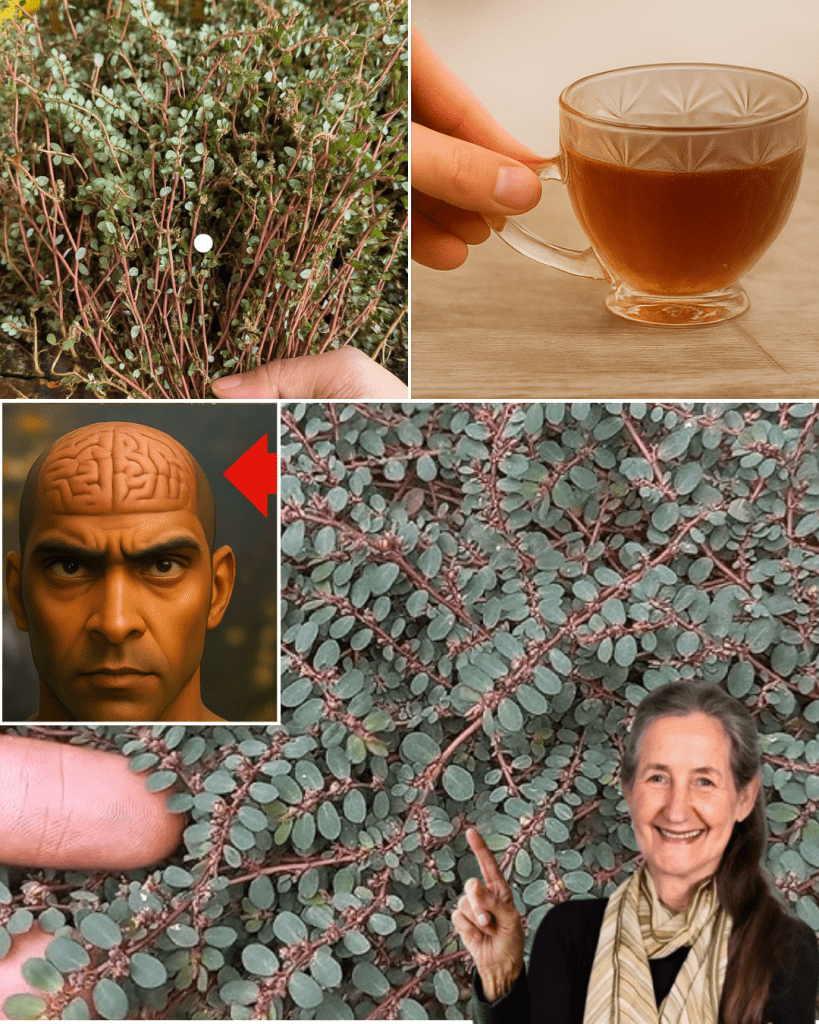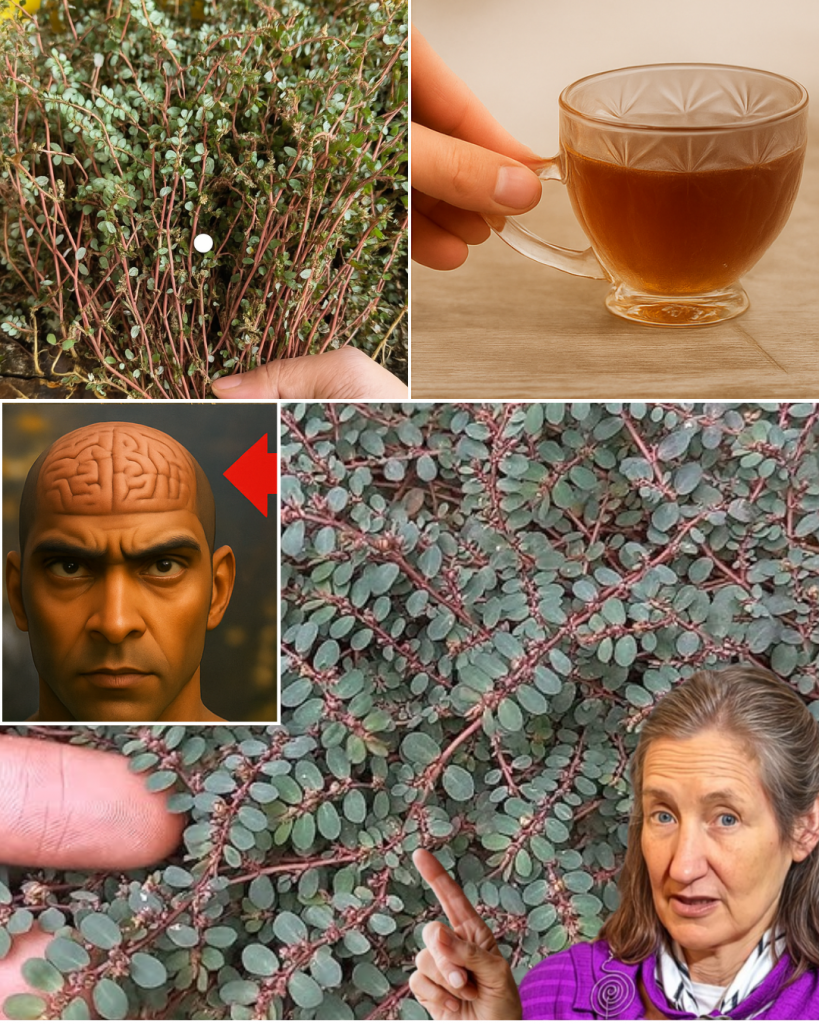Have you ever strolled down a cracked sidewalk or wandered past a dusty roadside and noticed a small, unassuming plant creeping between the stones? Most of us pass it by without a second glance, dismissing it as just another weed. But what if this humble plant, often overlooked, held a treasure trove of potential health benefits? What if the very greenery we ignore could be a natural ally for wellness, steeped in centuries of traditional wisdom? Meet Euphorbia Hirta, a sprawling little herb with a big reputation in herbal traditions across the globe. Known as asthma weed, this plant is sparking curiosity among those seeking natural remedies. Let’s dive into its fascinating world and uncover why this roadside wonder deserves your attention.

🌱 What Is Euphorbia Hirta? A Closer Look at Nature’s Underdog
Euphorbia Hirta is a low-growing, sprawling plant that thrives in the toughest environments—think tropical and subtropical regions where it pops up in sidewalk cracks, along roadsides, or at the edges of gardens. Its small, oval leaves are adorned with tiny hairs, and its reddish stems give it a distinctive look. Often dismissed as a pesky weed, this plant has been a cornerstone in traditional herbal practices across Asia, Africa, and South America for generations. Herbalists have long valued it for its potential to support respiratory health, soothe digestive issues, and even aid skin concerns. But what makes this unassuming plant so special, and why is it making a comeback in the world of natural wellness?
⚠️ A Word of Caution
Before we explore its uses, a critical reminder: while Euphorbia Hirta has a rich history in traditional medicine, it’s not a one-size-fits-all remedy. Always consult a healthcare professional before experimenting with wild herbs, as improper use can lead to risks. This plant’s power lies in its careful, informed application.
🌬️ A Breath of Fresh Air: Respiratory Support
One of the most intriguing aspects of Euphorbia Hirta is its nickname—asthma weed. This moniker comes from its long-standing use in traditional medicine to ease breathing discomfort, wheezing, or chest tightness. Across cultures, herbalists have turned to this plant to help soothe respiratory challenges. The dried leaves are often steeped into a gentle tea, believed to relax airways and calm persistent coughing. Imagine sipping a warm, earthy brew that might just offer a moment of relief when your chest feels tight. While modern science is still catching up to these traditional claims, the cultural significance of this remedy speaks volumes about its potential. Could this roadside weed hold the key to easier breathing for some?
🍃 Soothing the Gut: A Natural Ally for Digestion
Beyond the lungs, Euphorbia Hirta has been a go-to in traditional practices for digestive health. In many cultures, herbalists have used it to address mild stomach upset, diarrhea, or even intestinal parasites. A carefully prepared tea or decoction from the plant is said to calm the gut, promote regular bowel movements, and restore balance to the digestive system. Picture this: a simple infusion made from sun-dried leaves, sipped slowly to ease discomfort after a heavy meal. While these uses are rooted in folklore rather than clinical trials, they highlight the plant’s versatility and its deep connection to natural healing traditions. Isn’t it remarkable how a plant so common could hold such potential for wellness?
🩺 Skin Deep: A Traditional Remedy for Minor Irritations
The benefits of Euphorbia Hirta don’t stop at internal health. In traditional settings, the plant’s sap or crushed leaves are sometimes applied to minor wounds, cuts, or skin irritations. The milky latex, when used with extreme care, is believed to promote healing and soothe inflammation. However, a word of warning: this sap can irritate sensitive skin or eyes, so it’s not something to experiment with lightly. Under the guidance of an experienced herbalist, a small amount of crushed plant matter might be gently applied to the skin, avoiding sensitive areas. The idea that a plant growing wild in your backyard could double as a skin-soothing remedy is nothing short of fascinating, don’t you think?
🍵 How to Harness Euphorbia Hirta: Traditional Preparations
Curious about how this plant is used? Traditional herbalists have perfected simple yet effective methods to unlock its potential. Here’s a glimpse into how Euphorbia Hirta is traditionally prepared:
Dried Leaf Tea
The process begins with carefully washing and sun-drying the plant’s leaves. Once dried, a small handful is steeped in hot water for 5 to 10 minutes, creating a mild, earthy tea. Some add a touch of honey or lemon to enhance the flavor, making it a comforting ritual for those seeking respiratory or digestive relief.
Topical Application
For skin concerns, fresh plant matter is gently crushed into a paste and applied sparingly to the affected area. The key is precision—avoiding eyes, broken skin, or excessive amounts to prevent irritation.
These methods, passed down through generations, showcase the ingenuity of traditional herbalists who found value in what others overlooked. But here’s the catch: preparation requires knowledge and caution, as the plant’s potency can be a double-edged sword.

⚠️ The Fine Print: Risks and Precautions
While Euphorbia Hirta has been used safely in traditional contexts, it’s not without risks. The plant’s milky sap, in particular, can be toxic in large amounts or if mishandled. Here are some key precautions to keep in mind:
- Pregnancy and Breastfeeding: Avoid using Euphorbia Hirta, as its effects are not well-studied in these groups.
- Medication Interactions: The plant may interact with certain drugs, so check with a doctor if you’re on medication.
- Skin and Eye Irritation: The sap can cause significant irritation, especially for sensitive individuals.
- No Standardized Dosage: Without clinical guidelines, determining a safe dose is tricky.
- Not FDA-Approved: This plant is not recognized as a medical treatment by regulatory bodies.
The takeaway? Curiosity is wonderful, but safety comes first. Always seek professional guidance before exploring this plant’s potential.
🌍 Why Euphorbia Hirta Is Making a Comeback
In an era where natural wellness is gaining traction, plants like Euphorbia Hirta are stepping back into the spotlight. People are rediscovering the wisdom of traditional herbal practices, seeking alternatives to synthetic remedies. This weed, once ignored, is now sparking conversations among herbal enthusiasts, wellness seekers, and those curious about nature’s hidden gifts. While modern science is still exploring its efficacy, the plant’s centuries-long track record in traditional medicine is hard to dismiss. It’s a reminder that sometimes, the answers to our wellness questions might be growing right under our feet.
🌿 Nature’s Wisdom: A Call to Pay Attention
The next time you spot Euphorbia Hirta creeping along a roadside or peeking out from a garden’s edge, pause for a moment. This unassuming plant, often dismissed as a nuisance, carries a legacy of traditional healing that spans continents and cultures. It’s not a miracle cure, but its potential to support respiratory, digestive, and skin health has earned it a place in the herbalist’s toolkit. If you’re intrigued, consider reaching out to a qualified herbalist or healthcare provider to learn how to explore this plant safely.
💬 Have You Noticed This Plant?
Have you seen Euphorbia Hirta growing near your home? Maybe you’ve walked past it without realizing its potential. Share your thoughts in the comments below, or tag a friend who loves diving into the world of natural remedies. Let’s start a conversation about the hidden wonders of the plants around us!
Disclaimer
This article is for informational purposes only and does not replace professional medical advice. Always consult a healthcare provider before using herbs or supplements, especially if you have health conditions or are taking medication. Euphorbia Hirta should be approached with caution and under expert guidance to ensure safe use.









